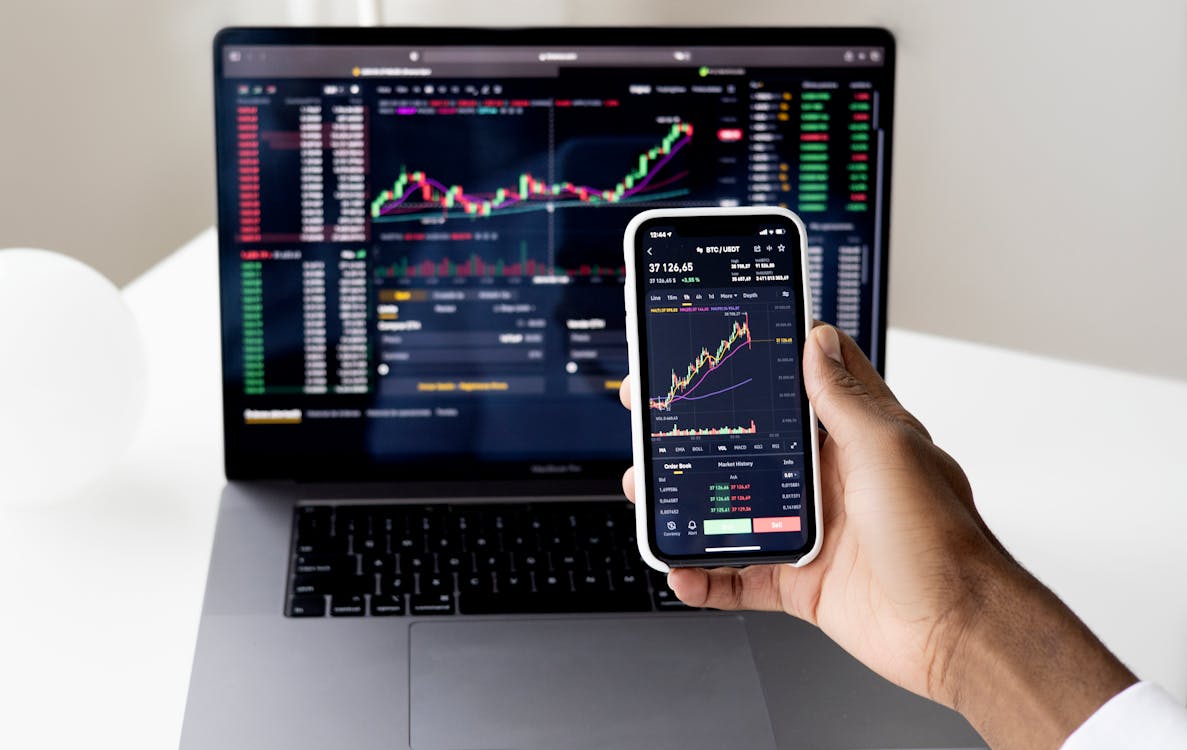Algorithmic Trading For Retail Traders: A Comprehensive Guide
Author: ChatGPT
February 28, 2023
Introduction
Algorithmic trading is a form of trading that uses complex algorithms to make decisions about when to buy and sell financial instruments. It has become increasingly popular in recent years, as it allows traders to take advantage of market movements without having to manually monitor the markets. In this article, we will explore algorithmic trading for retail traders, including what it is, how it works, and the advantages and disadvantages of using it.

What is Algorithmic Trading?
Algorithmic trading is a form of automated trading that uses computer algorithms to make decisions about when to buy and sell financial instruments. It is based on mathematical models that analyze market data and generate signals for buying or selling securities. Algorithmic trading can be used in any market, including stocks, futures, options, currencies, and commodities.
The main advantage of algorithmic trading is that it eliminates the need for manual monitoring of the markets. Instead of having to constantly monitor the markets for opportunities, algorithmic traders can set up their algorithms to automatically execute trades based on predetermined criteria. This allows them to take advantage of market movements without having to be actively involved in the process.
How Does Algorithmic Trading Work?
Algorithmic trading works by using computer algorithms to analyze market data and generate signals for buying or selling securities. These signals are then used by the trader’s software program to automatically execute trades based on predetermined criteria. The criteria used by these programs can vary widely depending on the trader’s goals and risk tolerance level.
The most common type of algorithmic trading system is known as a “black box” system. This type of system uses complex mathematical models that analyze market data and generate signals for buying or selling securities based on predetermined criteria such as price movements or technical indicators like moving averages or Bollinger bands.
Another type of algorithmic trading system is known as a “grey box” system. This type of system combines both manual input from the trader with automated signals generated by computer algorithms. The trader can set up their own parameters for when they want their trades executed, while still taking advantage of automated signals generated by computer algorithms.
Advantages & Disadvantages Of Algorithmic Trading For Retail Traders
There are several advantages and disadvantages associated with algorithmic trading for retail traders:
Advantages:
1) Automation: Algorithmic trading eliminates the need for manual monitoring of the markets which saves time and effort for retail traders who may not have enough time or resources available to actively monitor the markets themselves.
2) Increased Efficiency: By automating trades based on predetermined criteria, algorithmic traders can take advantage of opportunities in the markets more quickly than manual traders who have to manually monitor them themselves which increases efficiency in terms of time spent analyzing potential trades as well as capitalizing on them quickly before they disappear due to changing market conditions or other factors such as news events etc..
3) Reduced Risk: By automating trades based on predetermined criteria, algorithmic traders can reduce their risk exposure since they don't have to rely solely on their own judgement when making decisions about when to buy or sell securities which reduces potential losses due to human error or emotional decision making which can often lead to bad decisions being made in volatile markets where emotions tend run high among manual traders who are actively monitoring them themselves..

Disadvantages:
1) Cost: Algorithmic trading systems require significant upfront costs in terms of software development costs as well as ongoing maintenance costs due to needing regular updates in order keep up with changing market conditions etc..
2) Complexity: Algorithms are complex mathematical models which require significant expertise in order develop them properly which means that retail traders may not have access to this kind expertise unless they hire an outside firm or individual who specializes in developing these types systems which adds additional cost..
3) Lack Of Control: Since algorithmic systems are automated they lack flexibility since they cannot adapt quickly enough if there are sudden changes in market conditions due unforeseen news events etc.. This means that retail traders may not be able take full advantage certain opportunities if they arise suddenly due lack control over their automated systems..

Conclusion
In conclusion, algorithmic trading offers many advantages over traditional manual methods such as increased efficiency and reduced risk exposure but also comes with some drawbacks such as cost complexity and lack control over automated systems which must be taken into consideration before deciding whether it's right choice for you your particular situation..


How Long Does It Take To Sell Stock And Get Money?
Discover the answer to one of the most frequently asked questions in the world of finance - learn how long it takes to sell stock and receive your earnings.

What Are High Dividend Stocks?
Discover how investing in high dividend stocks can potentially provide a steady income stream and increase your long-term returns in the stock market.

Are Data Science And Machine Learning The Same?
Data science is a field of study that focuses on extracting insights from large amounts of data. It involves using various techniques such as machine learning, natural language processing, statistics, and data mining to analyze data sets and uncover patterns or trends.

Are Remarkable Tablets Worth It?
Are you looking for a device that can replace your notebooks and printed documents? If so, you may have heard of the reMarkable 2 tablet.
